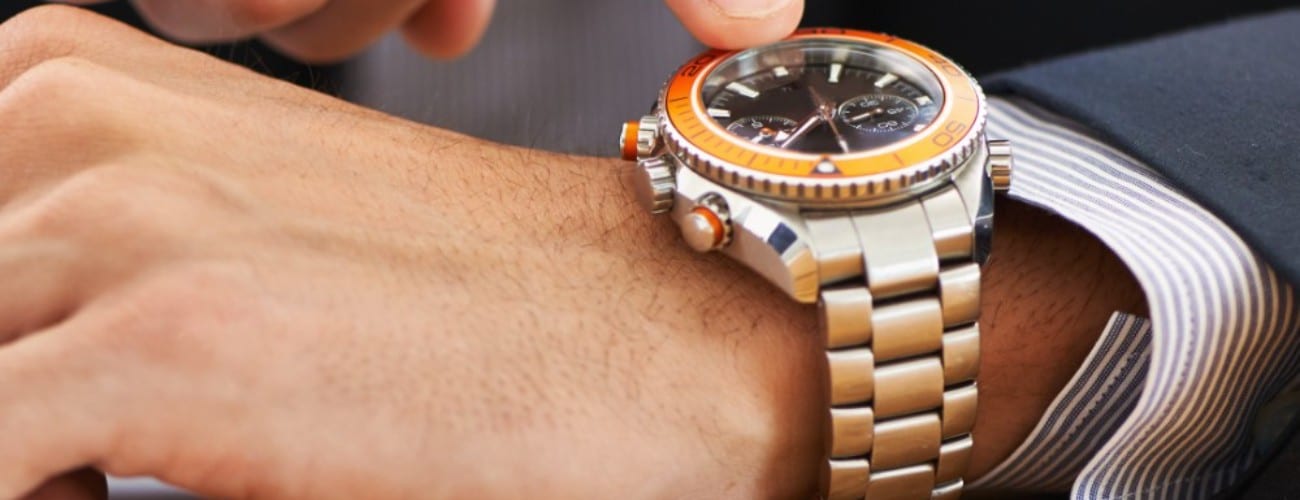How To Calculate Your Watch Price to Salary Ratio
Understanding the value of your timepiece in relation to your earnings can offer valuable insight when determining your financial decisions. It’s a straightforward concept: the watch price to salary ratio is a comparison of the cost of the watch you own or intend to purchase against your annual income. This figure can serve as a benchmark to ensure that your expenditure on luxury items aligns with your financial capabilities and goals.
Understanding Your Price-to-Salary Ratio
The Price to Salary Ratio is a simple fraction that expresses the cost of a watch as a proportion of your annual income. To calculate this ratio, divide the price of the watch by your yearly salary. For example, if you earn £40,000 a year and the watch you covet costs £4,000, the ratio would be 0.10. This implies that the watch is valued at 10% of your annual income. Utilising this ratio:
- Price of Watch: £4,000
- Annual Salary: £40,000
- Price to Salary Ratio: £4,000 / £40,000 = 0.10 or 10%
Calculating this ratio allows you to assess how significant this expense is in the context of your earnings.
Importance of Comparing Watch Price to Income
Understanding where a watch purchase fits within your financial landscape is key to making informed decisions. The importance of the Price to Salary Ratio lies in its ability to:
- Provide a clear benchmark for comparing the affordability of different watches.
- Help in setting a spending limit that correlates with your financial capabilities.
- Aid in financial planning, ensuring that luxury purchases do not impede on your ability to meet other financial obligations.
Considering this ratio encourages a disciplined approach to luxury spending, ensuring that you live within your means while enjoying the finer things in life.
Calculating Your Watch Price to Salary Ratio

To establish a clear understanding of your financial expenditure on luxury items such as watches, calculating the watch price to salary ratio offers a concrete measure.
Determining Your Annual Salary
Your annual salary is the foundational figure in this equation. Gather your payslips, tax returns, or ask your human resources department to provide you with the gross annual amount you earn before taxes. Do not forget to include any regular bonuses or commissions that are a consistent part of your income.
- Annual Salary: The total of your gross monthly income multiplied by 12.
Assessing the Value of Your Watch
Identify the current market value of your watch. If it’s new, use the retail price. For pre-owned or vintage watches, consult a professional appraiser or look at recent sales of comparable models online.
- Watch Value: Use the most accurate current price of your watch.
Performing the Calculation
To calculate your watch price to salary ratio, divide the current value of your watch by your annual salary, and then multiply by 100 to convert to a percentage.
- Watch Price / Annual Salary = Ratio
- Ratio x 100 = Percentage (%)
This percentage reveals what portion of your annual income is represented by the value of your watch. A lower percentage suggests a more affordable expenditure relative to your income, while a higher percentage indicates a significant investment.
Interpreting the Results
After calculating your watch price to salary ratio, it’s essential to understand what this number means for your financial health and decision-making.
The ratio you’ve calculated provides insight into how your watch purchase aligns with your financial status. A lower ratio indicates a purchase that is more affordable relative to your earnings. For instance, a ratio of 0.5% suggests that your watch price is half a percent of your annual income, which typically reflects a financially conservative choice. Conversely, a ratio exceeding 5% might indicate a significant expenditure in relation to your salary, potentially impacting your ability to save or invest money.

Making Informed Decisions Based on the Ratio
Use your ratio as a benchmark for future purchases. If your watch price to salary ratio is high, consider waiting for a more financially opportune time or opting for a less expensive model. On the other hand, if your ratio is comfortably low, this might suggest you have flexibility in your budget. Remember, the ideal ratio is subjective and varies based on individual financial goals and responsibilities. Use the ratio to inform but not solely dictate financial decisions.
1. Consider Your Budget
When purchasing expensive goods, whether it’s a luxury watch or car, the first thing to consider is your budget. Yes, you can sell your luxury watch for a higher price. While that’s a motivation, that should not be your only consideration. There is a rule of thumb to buy luxury wristwatches, especially when you don’t have much cash to spare — TRY to save up 1% of your yearly income until you have enough to purchase the luxury timepiece. This means that if you make only $50,000 in a calendar year, it will take you two years to buy a $1000 wristwatch.
This rule will now help you draw up your budget. Now it’s one thing to have a budget, it’s another ball game to stick to it. You shouldn’t cheat yourself after deciding how much money to keep for your luxury purchase. Again, this means that you should have a projection of the amount of money you will likely have in the future based on your current earnings. While your projection may not be accurate, it helps to have a near-accurate estimate. It’s a luxury watch. It’s an accessory you can do without, so it’s not a great idea to spend what you don’t have on it.
2. The Value Of The Luxury Timepiece
It is no longer news that purchasing wristwatches can be a good investment if you go for a brand that appreciates well years after release. Still, it is also true that some watches do not increase in value. They can remain the same, or their value may even fall. That said, reselling your watch for a huge price should not be your only consideration or motivation.
What’s more, while you may have drawn up a budget, you also want to ensure it is feasible. The value of the luxury watch you want to buy should also not be too expensive as it may take a long time to complete the savings using the 1% of your annual saving thumb rule. You also want to remember that inflation may kick in, and the watch’s value may change.
3. Why Do You Want A Luxury Watch?
- For its function: As earlier mentioned, it’s not a bad idea to want the fine things life can offer. But if your need or desire for a watch is the most basic: to check the time, you probably won’t find a $5000 wristwatch satisfying even after you acquire it. Furthermore, you could want a wristwatch for a specific feature, e.g., water-resistant. Usually, high-end wristwatches with this feature can be significantly expensive. So, you can keep things on the less expensive lane by going for a lower yet great brand that will offer the feature you want, especially when you don’t earn so much yearly. Altogether, keeping things simple with your budget yet satisfying the desire you want in a watch is key, as you don’t want to get plagued with buyer’s remorse. Still, this doesn’t mean that you cannot satisfy your most basic need for a watch and other wants as well if you can afford it.
- Quality Features: For some people, the features furnished into a watch and the material drive them to purchase. It might not even be the most aesthetically appealing wristwatch out there. For such persons, their desire will only be satisfied after purchasing a watch with, for example, an exquisite diamond finish, PVD coating, impressive complications, complex movements, and so on. With that in mind, if you are in this boat, you’d proudly wear and love your watch after you purchase it, with the satisfaction you intend to meet fully met.
- Flashy appearance: a wristwatch can be expensive yet not flashy, while many expensive wristwatches have a very high-value appearance the moment people look at it. If your idea of a wristwatch is to make a statement of how rich you are or to sell yourself in a gathering or meeting, you should still make sure you don’t go broke buying it.

Found A Watch You Like?
No matter your need or desire for a luxury watch, everyone wants something that will stand the test of time. Whether it’s £300 or £3000, you should get a with a realistic expectation in mind. You don’t want to buy a wristwatch advertised to have an 18k gold finish and encrusted with diamonds for $300. You may likely be shooting yourself in the leg, especially if you are not an expert in identifying knockoffs. Such watches will likely be furnished with fake catchy, selling features and other basic features that are expected to make a wristwatch stand the test of time. That said, the following are some of the things to look out for in a wristwatch.
Frequently Asked Questions
What proportion of my salary should be spent on a watch?
Spending no more than a month’s net salary on a new watch is considered prudent. If you earn £2,500 per month, a watch costing around £2,500 should be your upper limit.
How do you determine if a luxury watch is within your financial means?
To determine if a luxury watch fits within your budget, examine your disposable income after essential expenses. A luxury watch should not compromise your financial stability or savings goals.
What is a reasonable amount to invest in a watch collection?
The investment in a watch collection should reflect your disposable income and passion for horology, typically not exceeding 5-10% of your annual income.
Is it justifiable to purchase a Rolex on a six-figure salary?
Purchasing a Rolex can be justifiable on a six-figure salary provided it falls within a reasonable percentage of your disposable income, and it does not hinder your financial commitments or goals.
What is the typical markup on luxury watches?
The markup on luxury watches can vary widely, but retailers typically mark up watches by 30% to 50% above the wholesale price. However, limited edition pieces may have a higher markup.

